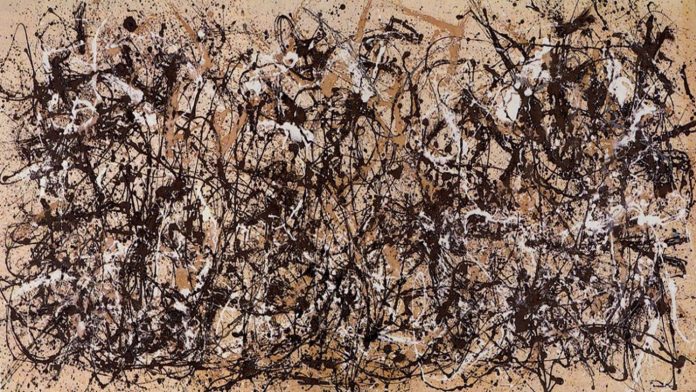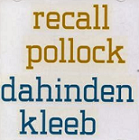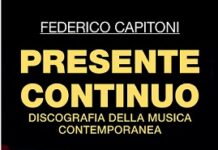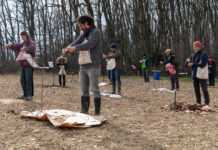
 One of the main qualities that I love in music is that of coherence: many artists over time have made a bad use of it, especially when they saw increase their success with the public; on the contrary there are others musicians who have never a sought success, because their aim is to hit the audience without forcing, so that it is able to understand the proposal. The pianist Hildegard Kleeb and her partner trombonist Roland Dahinden have always worked to repropose and popularize the world of free improvisation of post-Cageana origin, calling to mind, on the hand, the historical names of the New York’s creativity or composers belonging to its sphere of attraction (in addition with Cage, there were Wolff, Tenney, Lucier, Braxton. and so on) and on the other hand, the theoretical acceptances of much of the composition’s European world: they are almost naturally involved in other musical concepts such as alea, instruments’s preparation, clusters, silences, extension techniques, jazz improvisation: the paths to follow for the future of music. The Swiss couple has been appreciated many years ago for the revival of some pieces of Cage in version piano-trombone, but there is no doubt that they must to be mentioned for other recordings (among them, Kleeb should be remembered for “Grisailles”, a composition for three pianos of austrian composer Peter Ablinger) The “piano-trombone” is certainly one of the lesser explored duets in jazz, so if you keep in mind also the matrix of contemporary music, the two musicians have done a special job in the artistic communication that shows the interconnections between the two instruments.”Recall Pollock” is a true testament of these musical relationships: to pay homage to the painter who has completed the process of transition to the non-figurative art, could be tricky especially if you do not have sufficient means to load the expression: instead the two musicians use the narrative assumption, in which the music is described such as an ideal day of the painter: Kleeb proposes his piano playing without morphology, with clusters that evoke flow of spilled paint, while Dahinden, with an extraordinary mastery of extended techniques of the trombone, guide the hand of the painter in his nervous and creative developments; here we are faced with instruments that speak a language different from what we usually hear, terribly hard, but fascinating, showing an alternation between the most dynamic compositions and other more reflective (as if the painter was thinking about what to do).”Recall Pollock” is a valuable resource to finally define their work in a discography that usually gave a bad image of their art, suggesting a splendid vein in the reinterpretation not adequately supported by the will of composing.
One of the main qualities that I love in music is that of coherence: many artists over time have made a bad use of it, especially when they saw increase their success with the public; on the contrary there are others musicians who have never a sought success, because their aim is to hit the audience without forcing, so that it is able to understand the proposal. The pianist Hildegard Kleeb and her partner trombonist Roland Dahinden have always worked to repropose and popularize the world of free improvisation of post-Cageana origin, calling to mind, on the hand, the historical names of the New York’s creativity or composers belonging to its sphere of attraction (in addition with Cage, there were Wolff, Tenney, Lucier, Braxton. and so on) and on the other hand, the theoretical acceptances of much of the composition’s European world: they are almost naturally involved in other musical concepts such as alea, instruments’s preparation, clusters, silences, extension techniques, jazz improvisation: the paths to follow for the future of music. The Swiss couple has been appreciated many years ago for the revival of some pieces of Cage in version piano-trombone, but there is no doubt that they must to be mentioned for other recordings (among them, Kleeb should be remembered for “Grisailles”, a composition for three pianos of austrian composer Peter Ablinger) The “piano-trombone” is certainly one of the lesser explored duets in jazz, so if you keep in mind also the matrix of contemporary music, the two musicians have done a special job in the artistic communication that shows the interconnections between the two instruments.”Recall Pollock” is a true testament of these musical relationships: to pay homage to the painter who has completed the process of transition to the non-figurative art, could be tricky especially if you do not have sufficient means to load the expression: instead the two musicians use the narrative assumption, in which the music is described such as an ideal day of the painter: Kleeb proposes his piano playing without morphology, with clusters that evoke flow of spilled paint, while Dahinden, with an extraordinary mastery of extended techniques of the trombone, guide the hand of the painter in his nervous and creative developments; here we are faced with instruments that speak a language different from what we usually hear, terribly hard, but fascinating, showing an alternation between the most dynamic compositions and other more reflective (as if the painter was thinking about what to do).”Recall Pollock” is a valuable resource to finally define their work in a discography that usually gave a bad image of their art, suggesting a splendid vein in the reinterpretation not adequately supported by the will of composing.———————————————————————————————————
Una delle principali caratteristiche che amo nella musica è quella della coerenza: molti artisti nel tempo non he hanno fatto un buon uso specie quando hanno visto incrementare il loro successo tra il pubblico; c’è ne sono altri che, invece, il successo planetario tra il pubblico non l’hanno mai cercato, perchè l’ottica era quella di colpire l’audience senza andarla a forzare, che fosse in grado di comprendere la proposta: la pianista Hildegard Kleeb e il suo partner il trombonista Roland Dahinden si sono da sempre adoperati per riproporre e divulgare il mondo dell’improvvisazione libera di ascendenza post-cageana, incrociando i nomi “storici” attratti dall’area creativa newyorchese (oltre a Cage, Wolff, Tenney, Lucier, Braxton. etc.) con le accettazioni teoriche di molta parte del mondo compositivo europeo, ed integrandosi a perfezione nelle teorie che da sempre hanno indicato in altri concetti come la casualità, le preparazioni degli strumenti e i clusters o i silenzi e le tecniche di estensione, alcune delle vie da seguire per il futuro della musica, incrociando soprattutto l’esperienza fatta dai jazzisti. I due svizzeri si sono fatti apprezzare molti anni fa per la riproposizione di alcuni brani di Cage in versione piano-trombone, ma è indubbio che gli stessi andrebberro citati anche per altre registrazioni (tra tutte forse la Kleeb va ricordata per le “Grisailles”, composizioni per triplo piano del compositore Peter Ablinger); il duo piano-trombone non è certamente uno dei duetti più seguiti nel jazz, perciò anche in funzione della matrice contemporanea questi due musicisti hanno fatto un gran lavoro di interplay che mostra le interconnessioni tra i due strumenti. “Recal Pollock” è un vero e proprio testamento di questi rapporti: un omaggio al pittore, che ha completato il processo di trasformazione verso le arti non figurative, potrebbe essere insidioso da condurre specie se non si hanno mezzi sufficienti di espressione: invece i due compiono un lavoro “narrativo”, in cui ipoteticamente attraverso la musica viene descritta una ideale giornata del pittore: da una parte Kleeb propone il suo pianismo a scoppio con clusters che evocano spargimenti di vernice a flotti, dall’altra Dahinden, con una straordinaria padronanza delle tecniche estese del trombone, guida la mano del pittore nelle sue evoluzioni nervose e creative; strumenti che parlano un linguaggio sonoro diverso da quello che si è soliti ascoltare, terribilmente duro ma affascinante e che mostra un alternarsi tra composizioni più dinamiche ed altre più riflessive (come se il pittore stesse pensando a cosa fare). Non avendo fornito quasi mai una prova di verifica dell’efficacia delle loro composizioni, a causa della loro splendida vena di reinterpretatori, questo “Recall Pollock” è una preziosa fonte per inquadrare finalmente il loro lavoro a livello discografico.






